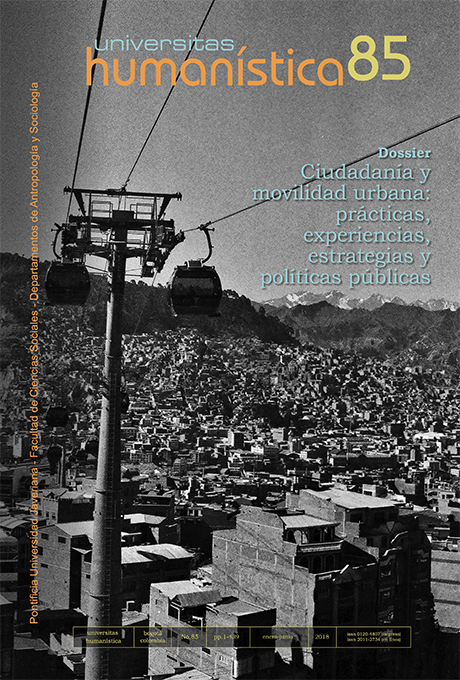Resumen
El objetivo de este artículo es entender algunas estrategias de la población para desplazarse durante el horario nocturno en la ciudad de Rio de Janeiro. En este sentido, la investigación involucró procedimientos de observación directa de los circuitos, medios de locomoción, prácticas y sus respectivos horarios, ritmos e interacciones sociales. En medio de la multiplicidad de estrategias se percibió que algunos patrones organizan los circuitos, denotando un profundo sentido relacional en la movilidad y su dependencia de los sistemas de transporte. La asociación de la movilidad nocturna hacia los centros de ocio es una característica que marca los principales patrones y circuitos de la noche de Rio, en las más diferentes escalas de manifestación del fenómeno, revelando un reto para la gestión urbana en un escenario de expansión de las relaciones sociales en el horario nocturno.

La revista Universitas Humanística se encuentra registrada bajo la licencia Creative Commons Reconocimiento 4.0 Internacional. Por lo tanto, esta obra se puede reproducir, distribuir y comunicar públicamente en formato digital, siempre que se reconozca el nombre de los autores y a la Pontificia Universidad Javeriana. Se permite citar, adaptar, transformar, autoarchivar, republicar y crear a partir del material, para cualquier finalidad (incluso comercial), siempre que se reconozca adecuadamente la autoría, se proporcione un enlace a la obra original y se indique si se han realizado cambios. La Pontificia Universidad Javeriana no retiene los derechos sobre las obras publicadas y los contenidos son responsabilidad exclusiva de los autores, quienes conservan sus derechos morales, intelectuales, de privacidad y publicidad.
El aval sobre la intervención de la obra (revisión, corrección de estilo, traducción, diagramación) y su posterior divulgación se otorga mediante una licencia de uso y no a través de una cesión de derechos, lo que representa que la revista y la Pontificia Universidad Javeriana se eximen de cualquier responsabilidad que se pueda derivar de una mala práctica ética por parte de los autores. En consecuencia de la protección brindada por la licencia de uso, la revista no se encuentra en la obligación de publicar retractaciones o modificar la información ya publicada, a no ser que la errata surja del proceso de gestión editorial. La publicación de contenidos en esta revista no representa regalías para los contribuyentes.


